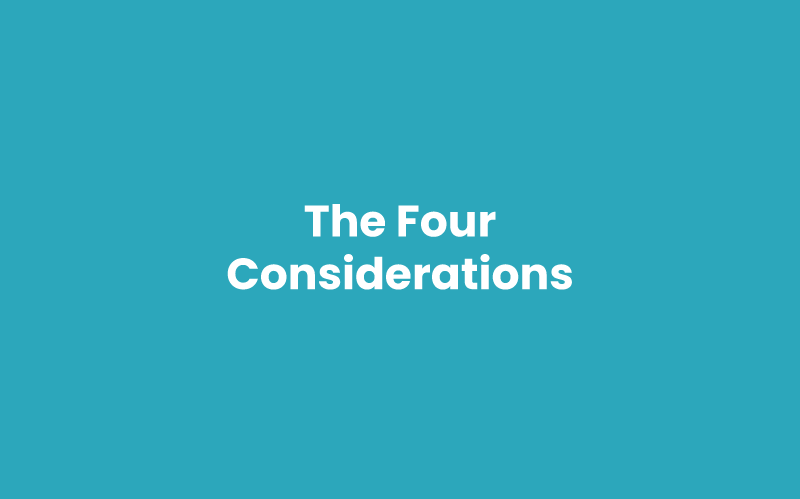The Four Considerations
When deciding if or how we want to respond to acts of exclusion, or any challenging interpersonal interactions, it can help to consider the following:
- Situation — Where am I? Who is nearby? Do I feel safe physically or emotionally?
- Relationship — Who are the others involved? Are they strangers? Will I ever see them again? Are they friends or family? Are they my teachers or students? Are they my boss, colleague, or direct report? How invested am I in the relationship?
- Goals — What do I want to happen? Do I just want to vent and let others to know I am angry or upset? Do I want empathy and understanding? Do I want to open them up to learning? Do I want their behavior to change? Or do I want to focus on my own mental health?
- Resources — Do I have the time to address the situation? Do I have the energy and emotional bandwidth to deal with it?
Weighing these four considerations helps us to check in with ourselves to address the situation in the best way for us in a given moment.
If the situation does not feel safe, the best choice is often to walk away regardless of the other considerations what while staying calm, cool, collected, confident, and clear. Even if we do feel safe, we may still choose to walk away if we are dealing with strangers or we don’t have the time or emotional bandwidth to engage.
On the other hand, if we are invested in the relationship, we may choose to engage even when we don’t have much bandwidth. The goals of building understanding and fostering connection may outweigh the costs of the emotional effort.
Example:
A common act of exclusion is when a Black person is told “Wow! You are so articulate!” with surprise. Here are possible responses, depending on the four considerations above:
Scenario 1
Situation — Feels safe, others nearby
Relationship — Strangers
Goals — Protect self, nurture one’s own mental health
Resources — Very little time & energy
Response — Walk away without a word.
Scenario 2
Situation — Feels safe, others nearby
Relationship — Acquaintances
Goals — Speak out, spark reflection
Resources — Limited time & energy
Response — Use humor and say, “Well I would think so. I talk a lot and have a lot of practice!”
Scenario 3
Situation — Feels safe, private setting
Relationship — Close friends
Goals — Inspire empathy, learning, & behavior change
Resources — Time & energy
Response — Use assertive questions and I Statements such as, “That’s an interesting comment. Are you surprised by that? Tell me more.”
Or, “I feel hurt when I hear that comment so often, because I need respect. Could you consider the possibility that you might have assumed that a Black person would not be articulate because of stereotypes?
If a close friend or family member consistently makes similar comments, then it may be necessary to delve deeper into the learning process with them. If they are willing partners, the Five Tools for Assertive Conflict Resolution can be helpful.

